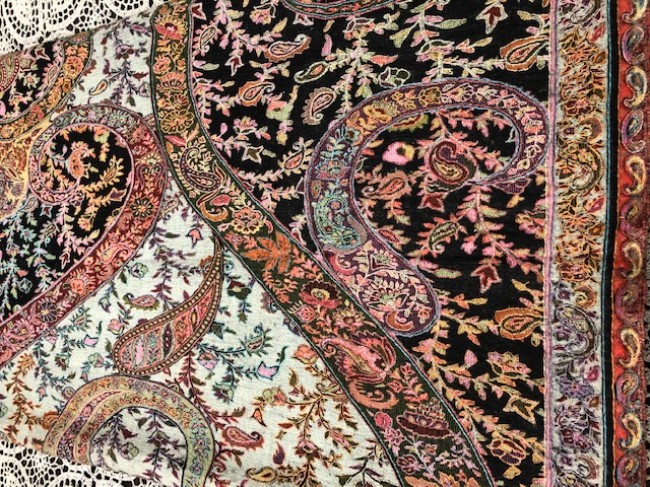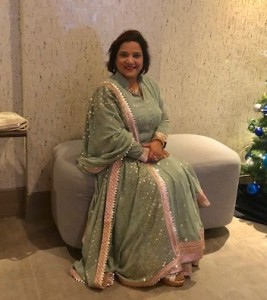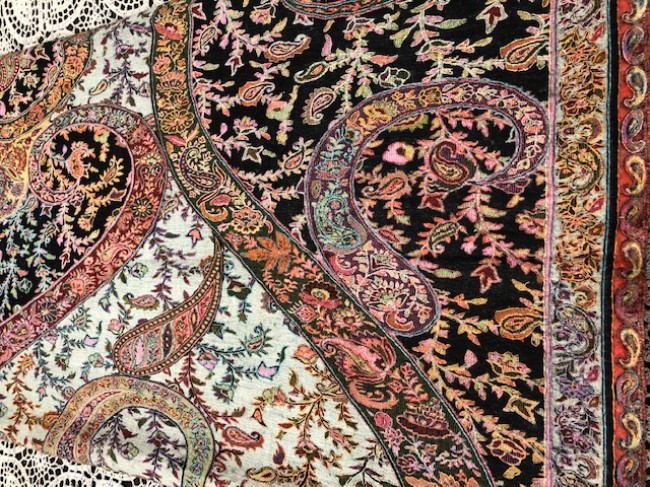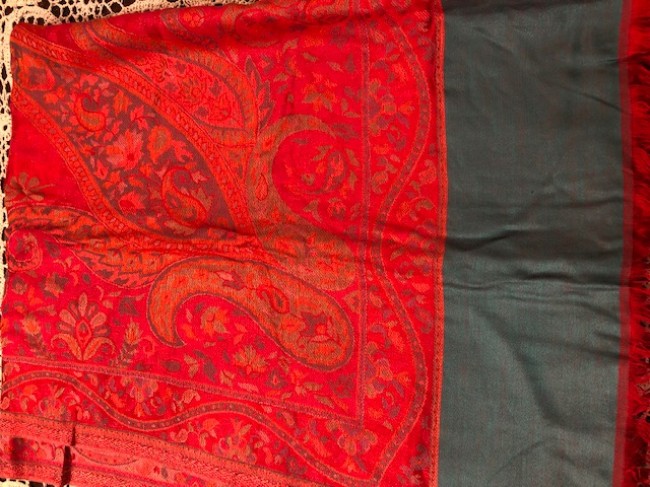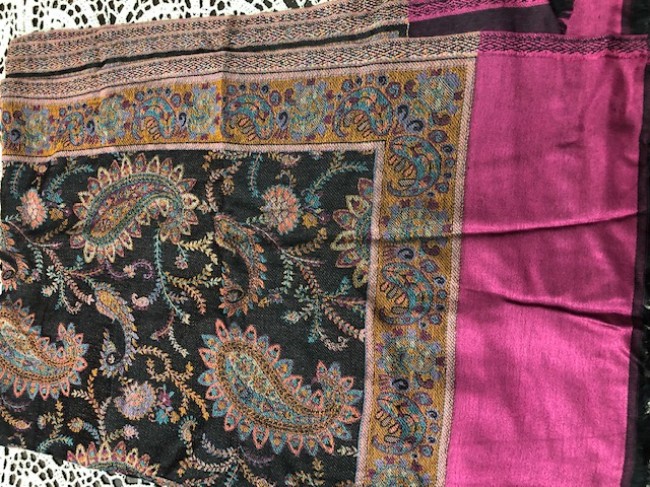The fleece of the pashmina goat has been used for thousands of years to make the highest quality of shawls called pashminas.
Cashmere or Kashmir shawls are of a very soft fabric made from the wool of the cashmere goat.
Shawls with paisley design were in fashion for more than 100 years. During this time, millions were woven, embroidered and printed in Kashmir. It was the woven Kashmir shawls which first caught women’s imagination, with European manufactures quick to emulate by weaving or printing. Paisley shawls were the most economically produced shawls for the longest period.
The earliest examples have a plain background with end borders featuring large floral sprays, flower vases and pine-cones.
The best fleece wool, soft, silky and warm, is of the wild goat. The wool is painstakingly gathered from shrubs and rough rocks against which the animals rub off their fleece on the approach of summer. This was undoubtedly the soft fleece wool from which were made the famous and much coveted ‘ring shawls’ during the Mughal era.
The needle -worked amlikor or amli made from pashmina wool is a shawl embroidered almost all over with the needle on a plain, woven background. The colors most commonly seen on pashmina shawls are yellow, white, black, blue, green, purple, crimson and scarlet. The design motifs are usually an imitation of nature like the leaf, flower and tree designs. They are always done in rich colors. When pashmina wool is used for embroidery work, it is made to blend so intimately with the texture of the basic shawl material that it would be difficult to insert even a fine needle between the embroidery stitches.
Emperor Akbar was a great admirer of the shawls of Kashmir.





